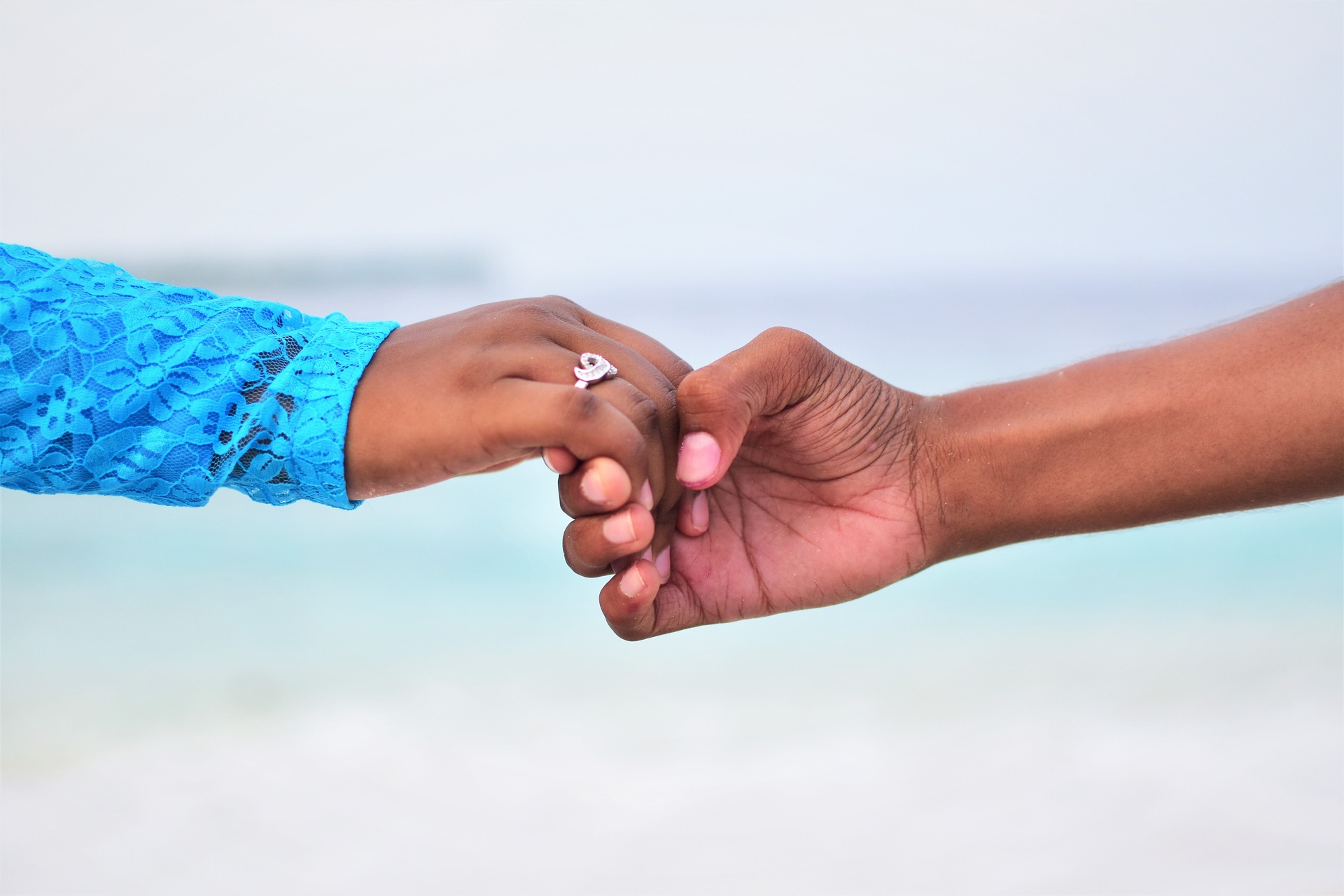Last Updated on June 28, 2024 by Joy Editors
When the time is right to pop the question, choosing an engagement ring is your first step down the aisle. But first, you might take a moment to consider just how much to spend on an engagement ring.
The fact is that diamond engagement rings are expensive. Your total spend is also a function of multiple factors, from the size of the center stone to the metal you choose for the setting.
Ahead, we enlist the help of two experts — Cartier jeweler descendant Jean Dousset and Nidhi Dangayach, founder of Verlas fine jewelry store — to break down the average cost of an engagement ring. For starters, here’s a look at the many factors that can shape your engagement ring budget:
“… the clarity and color of the center stone, the size, the artisanship of the cut, and even the type of precious metal used in the setting all impact the final cost [of an engagement ring].”
— Jean Dousset, great-great-grandson of Louis Cartier
The Average Cost of an Engagement Ring
A one-carat engagement ring costs between $3,500-$6,500. From fabrication to personal preferences, however, engagement ring prices vary. But as we all know, “diamonds are forever” — so there’s a lot to consider. Without a crystal ball, we can’t tell you exactly what your engagement ring will cost. We can, however, give you the next best thing to help you navigate this important milestone: an average price range.
World-renowned jeweler Jean Dousset, the great-great-grandson of Louis Cartier, says customers spend, on average, “between $5,000 to $15,000” on their engagement rings. And as we mentioned earlier, there are a lot of factors at play, from the type of metal chosen for the setting to features like halos and side stones.
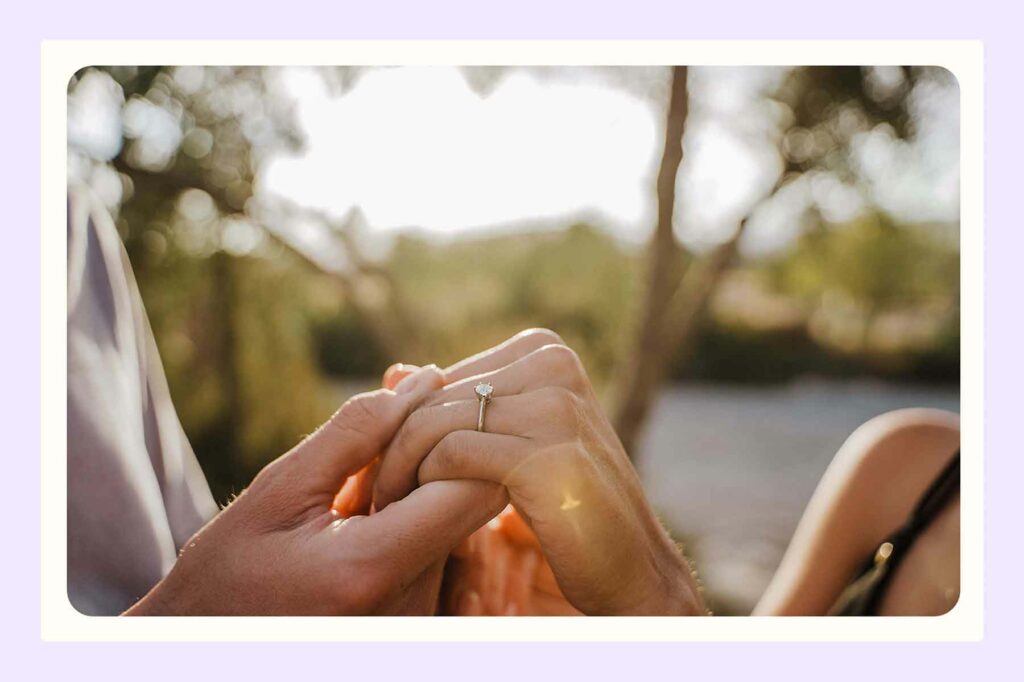
But one of the most significant cost factors to consider is the center stone, including the size as well as carat, cut, color and clarity — otherwise known as the 4Cs.
How the 4Cs Affect an Engagement Ring Price Tag
“There was a time, not very long ago, when there was no universal way for people to communicate the factors that characterized a faceted diamond,” says Nidhi Dangayach, jewelry expert and founder of the online diamond retailer Verlas. “The creation of the diamond 4Cs and the GIA International Diamond Grading System meant … diamond quality could be communicated in a universal language.”
According to Dangayach, the 4Cs stand for:
- Carat: “Carat is a measure of a diamond’s weight, not its size. Larger diamonds are rarer and often more valuable.”
- Cut: “Cut refers to how well a diamond has been shaped and faceted. A well-cut diamond reflects light beautifully, giving it brilliance and sparkle.”
- Color: “The GIA grades diamonds on a scale from D (colorless) to Z (light yellow or brown). The less color a diamond has, the more valuable it tends to be.”
- Clarity: “Clarity measures the presence of inclusions (internal flaws or imperfections) or blemishes on the surface. The GIA grades clarity on a scale from flawless (no inclusions or blemishes visible under 10x magnification) to included (inclusions and/or blemishes visible to the naked eye). The fewer and less noticeable the flaws, the more valuable the diamond.”
“It’s a combination of all the 4Cs that determine the price of a diamond,” she adds. “For example, a slightly smaller diamond with an excellent cut may appear more brilliant and be more expensive than a larger diamond with a lower cut grade.”
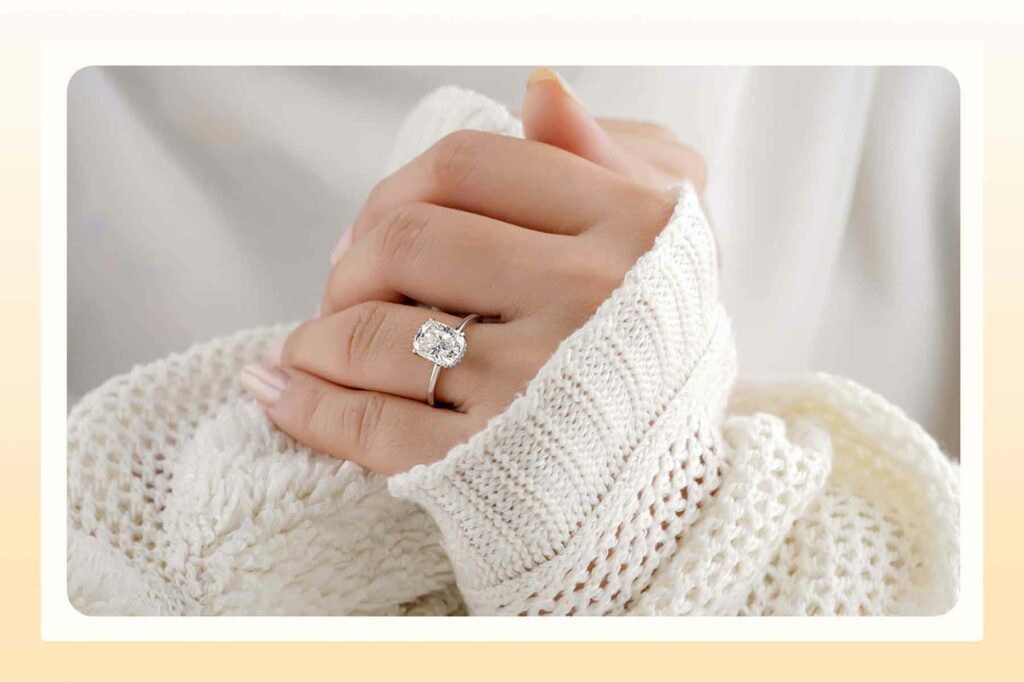
The Three-Month Salary Rule (and Why It’s a Myth)
“Thanks to clever marketing back in the day, there is a stigma that the proposer must spend a certain amount of their yearly salary to show and profess their love adequately,” Dousset says. “This is just not the case. The engagement buying process is something couples are doing together more and more. It is a deeply personal decision that also sets the tone for the journey to engagement.”
The concept started as far back as the 1930s, when famed jewelers DeBeers wanted to bolster waning diamond sales. In the campaign, diamonds were marketed as a way for a man to demonstrate his earning prowess at the height of the Great Depression and show a woman she was worth a more expensive ring. By the ’50s and ’60s, the rule was firmly rooted in wedding culture. Today, however, the three-month salary rule is falling out of favor in a big way.
“The three-month salary rule is the idea that your partner should spend three months’ worth of salary on your engagement ring,” says Dangayach. “This belief is an old rule of thumb, obviously traditional, and with an evolving clientele and engagement ring choices, is becoming outdated.
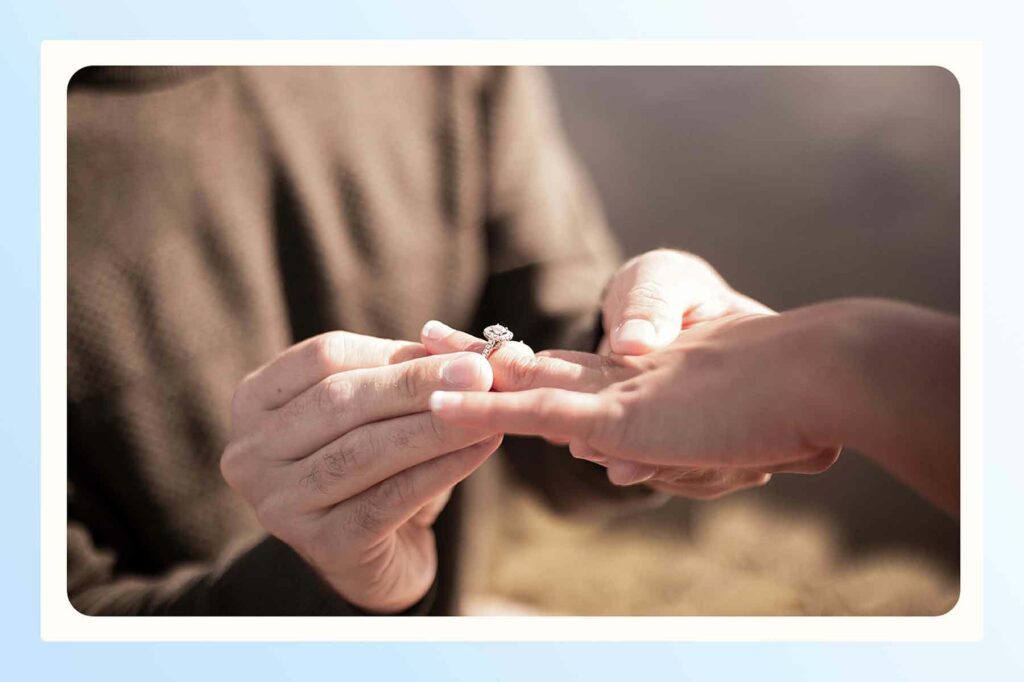
“When shopping for engagement rings today, customers are far more practical in determining the right budget,” she continues. How much money is spent on a ring may instead depend on whether both partners are contributing to the ring and what they feel comfortable with rather than sticking to these types of “rules.”
Setting Your Engagement Ring Budget
If there’s one thing we can say about diamonds, it’s that they’re not cheap. While you may not stick to the three-month salary rule, a high-quality diamond is still a big investment. And when you’re thinking with your heart instead of your head, things can go off the rails and over budget fast.
So, before you head out the door to your local jewelry store and plan a romantic proposal, you might want to think about your financial situation, ring priorities, and after-the-fact cost. Here are a few easy steps to follow when setting your engagement ring budget.
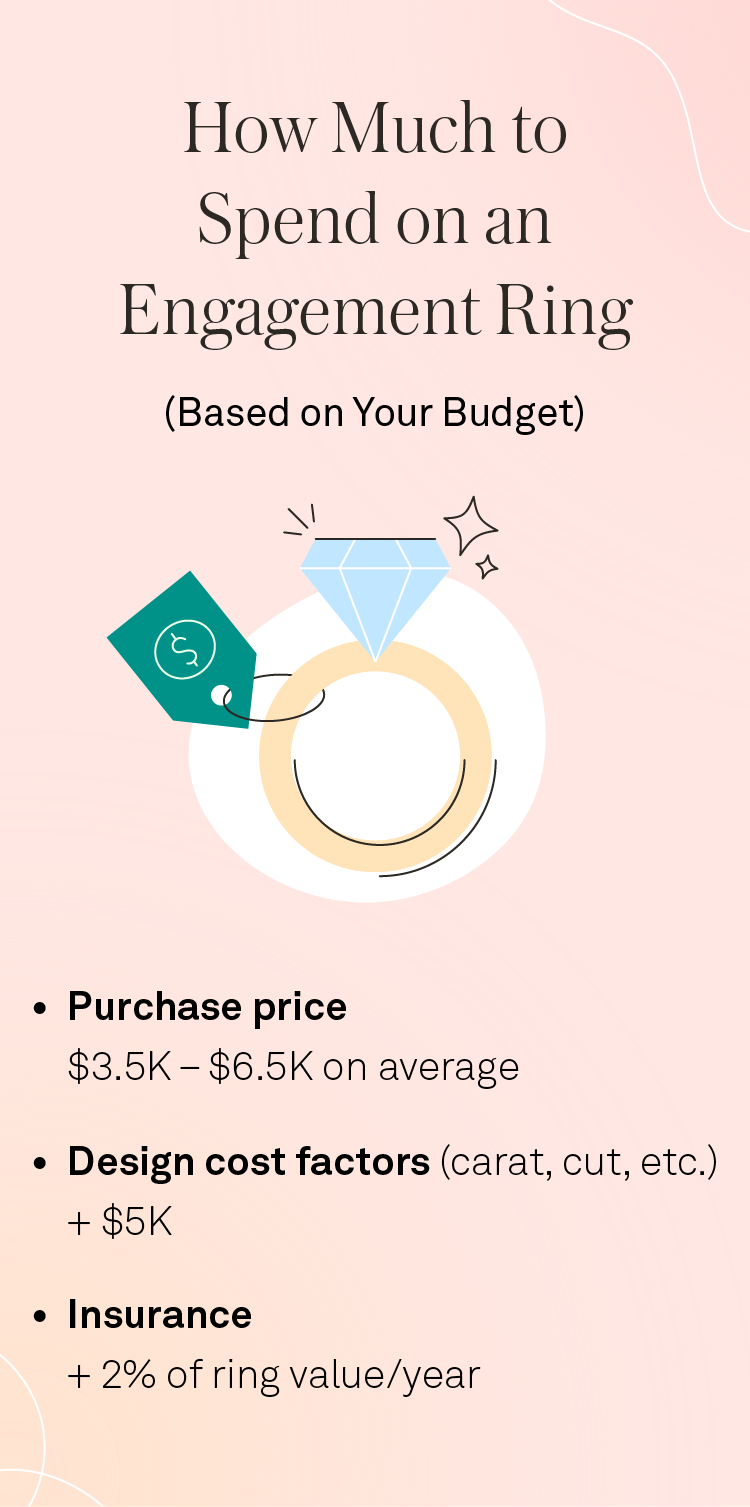
Evaluate your financial situation
Before any big purchase, it’s always a good idea to assess your financial situation and get a handle on the actual amount of money you can spend. While some couples include the engagement ring in their wedding budget, others don’t. Ultimately, that’s up to you to decide. Things to consider are:
- What you’re comfortable spending
- Ring payments that may potentially carry on into the start of the marriage
- Whether to use a credit card or pay cash
Get your priorities straight
There’s probably no worse feeling in the world than opening a ring box during your proposal only to see disappointment in the eyes of your beloved. The fact is, if you don’t know what type of ring to buy, you can’t know what to spend.
So, leading up to the purchase, you may have to put your detective skills to the test (if it’s going to be a surprise) or ask your partner outright what they want in a ring. You might find that your partner’s perfect ring isn’t a princess-cut solitaire but rather an heirloom ring in yellow gold with a sapphire center stone — big difference. You also need to know if your partner is prioritizing the setting or the center stone. All of the above will directly affect the price tag and your budget, so get your story straight and do it early.
Consider after-the-fact costs
If you’re spending upward of $5,000 for an engagement ring, you may want to include after-the-fact costs, like insurance. As you know, engagement rings are a big purchase. From loose side stones to theft and loss, ring insurance can go a long way toward a little peace of mind and may be well worth the investment.
7 Ways to Save Money on Engagement Rings
Everyone’s budget and engagement ring must-haves are different. If the ring you’re eyeing falls into the top end of your budget, there are still ways to save.
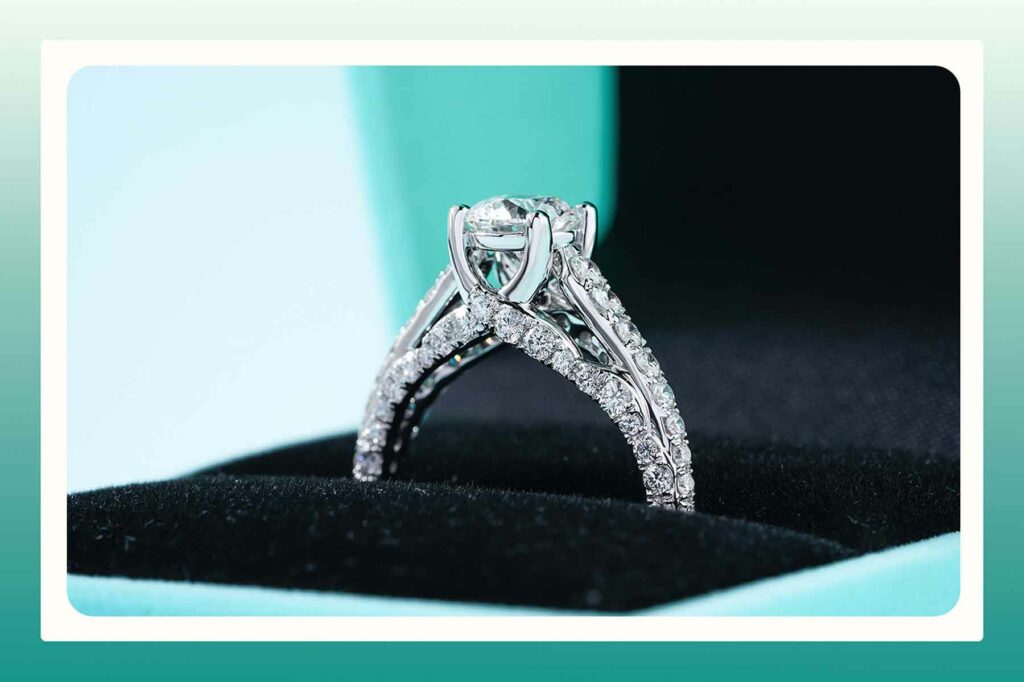
1. Consider diamond alternatives
Diamonds are the crowning glory of engagement rings and often the main driver of their high prices. If you find that a natural diamond engagement ring is too steep, consider a diamond alternative. Gemstones like emeralds and sapphires are incredibly beautiful, while clear stones like white sapphire and moissanite can pinch-hit for a diamond. Keep in mind that while colored gemstones are typically less expensive than diamonds, that may not be the case with rare and high-quality stones. Shop with care.
2. Opt for lab-grown diamonds
For another budget-friendly option couples might consider is lab-grown diamonds. “This unspoken tension has always existed between the ring clients’ desire and the one they can afford,” says Dousset, a leader in lab-grown diamonds. “This was one of the main reasons I decided to pivot exclusively to lab-grown diamonds so that everyone can acquire the diamond jewelry they desire without compromise.”
| Expert Tip: “There is no difference between mined and lab-grown diamonds aside from origin. Lab diamonds are liberating as they remove the financial tension that mined diamonds bring and the quality compromises many will make when considering a purchase.” — Jean Dousset |
3. Choose a simpler setting
When pricing out engagement rings, it’s important to know that settings matter. While a three-stone engagement ring symbolizing your past, present and future is heartwarming, it will add a bit to your final price tag. To keep things in check, opt for classic solitaire. A halo setting with a smaller center stone is another excellent option. The center stone may be smaller (and less expensive), but halos often make them look more prominent, so the ring will still pack a pretty nice punch.
4. Skip the brand names
Like everything else in the world, brand names often charge a premium. Engagement rings are no different. While it might be nice to take a stroll through Harry Winston, a non-designer ring may be more budget-friendly.
5. Shop online
It’s tempting to think that engagement ring shopping is limited to the local jewelry store in your area, but things have changed on that front as well. In fact, it’s easier than ever to make a ring purchase online. By granting you access to diamond retailers in every corner of the web, the internet can really open up your options and help you save money in the process.
6. Don’t go big or go home
For engagement rings that are easier on the purse strings, opt for diamonds that are just shy of whole weights (for example, .9 carats instead of 1 carat). Full-carat or half-carat diamonds typically sell at a premium compared to stones just under those weights.
7. Go custom
While custom anything often equals a higher price tag, that’s not always the case with engagement rings, particularly if you’re shopping for a loose diamond. Dangayach suggests collaborating with retailers who are willing to tailor your engagement ring to your specific preferences. In doing so, you can customize your overall experience according to your individual needs. “After all, you wouldn’t want your most treasured piece of jewelry to be a mass-produced item,” she says.
Engagement Ring FAQ
| What are the rules for wearing an engagement ring? “Traditionally, engagement rings are worn on the ring finger of your left hand,” says Dousset. “While there aren’t any set ‘rules’ for wearing an engagement ring, I would not recommend working out or playing sports while wearing your ring to avoid scratching, loosening the stones (especially pavé diamonds), or even losing your engagement ring.” |
| Should my wedding band and engagement ring match? “You don’t have to match your wedding ring and engagement ring,” says Dousset. “While matching the bands will give a cohesive look to your rings, your rings should be an expression of your personal style. … Couples should consider choosing a wedding band design that will not overpower and take away from the engagement ring.” |
| Why are engagement rings worn on the left hand? Wearing engagement rings on the left hand can be traced back to the ancient Romans, who believed that the left “ring” finger had a vein (the “vein of love” or “vena amoris”) that ran directly to the heart. |
| How do I choose the right ring style for my partner? While you can always look at your partner’s current jewelry to get a sense of their style, you can also talk it over with them. It can still be a surprise if you ask questions about their cut preferences and metal preferences. |
| Should I insure the engagement ring? If you choose to insure your engagement ring, the cost should be factored into the overall price of the ring. Typically, the annual cost of insuring an engagement ring is around 1 to 2 percent of the ring’s value. |


